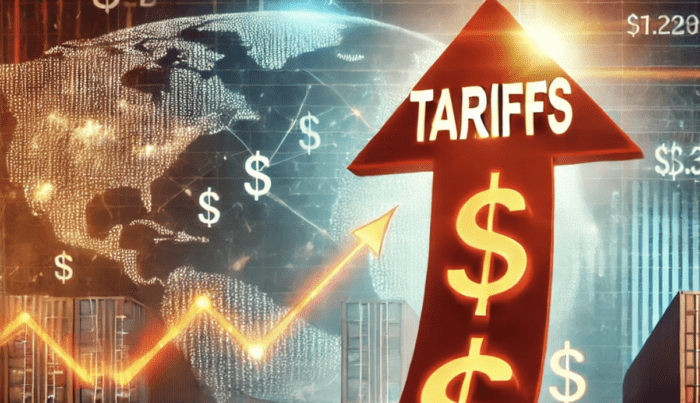Introduction
What follows are edited excerpts (2,224 words) from an excellent, albeit lengthy (3,981words), article by Richard Mills that is extremely enlightening.
What Are Rare Earth Elements?
“…Rare earth elements (REES) are a group of 17 elements comprising scandium, yttrium, and the lanthanides. The “rare” in rare earth elements came from frustrated 19th century chemists who decided they were uncommon after trying to isolate these chemically related elements. REES are also very hard to find in economic concentrations.
- The lanthanides are a group of 15 (cerium, dysprosium, erbium, europium, gadolinium, holmium, lanthanum, lutetium, neodymium, praseodymium, samarium, terbium, thorium, thulium, ytterbium) chemically similar elements with atomic numbers 57 through 71, inclusive.
- The lanthanides are divided into light rare elements (LREE), and heavy rare earth elements (HREE).
- Light REEs are made up of the first seven elements of the lanthanide series: lanthanum (La, atomic number 57), cerium (Ce, atomic number 58), praseodymium (Pr, atomic number 59), neodymium (Nd, atomic number 60) promethium (Pm, atomic number 61) and samarium (Sm, atomic number 62) of which the first four REEs — La, Ce, Pr, and Nd — constitute 80 to 99% of the total.
- Practically all light REEs are extracted from bastnasite and monazite, while the heavy REE comes from xenotime and ionic clays…
- HREEs are made up of the higher atomic numbered elements — europium (EU, atomic number 63), gadolinium (Gd, atomic number 64), terbium (TB, atomic number 65), dysprosium (Dy, atomic number 66), holmium (Ho, atomic number 67), ebium (Er, atomic number 68), thulium (Tm, atomic number 69), ytterbium (Yb, atomic number 70) and lutetium (Lu, atomic number 71).
- Ion-adsorbed REEs in clays from South China provide the bulk of HREE to the market.
- Yttrium isn’t a lanthanide but is included in the rare earths because it often occurs with them in nature — it has similar chemical properties. Scandium is also included in the group although it usually occurs only in minor amounts.

The most abundant rare earth elements are found in the Earth’s crust in amounts equal to nickel, copper, zinc, molybdenum or lead. Cerium is the 25th most abundant element of the 78 common elements in the crust. Even the two least abundant REEs (thulium, lutetium) are nearly 200 times more common than gold. Overall REEs have an abundance greater than silver and similar amounts to copper and lead.
Deposits of bastnasite in China and the United States represent the largest percentage of the world’s rare earth economic resources. The second largest percentage of the world’s LREE rare earth economic resources is monazite. Monazite contains less La, more Nd and some HREE, usually with elevated levels of thorium compared to bastnasite…
Mining REEs is fairly straightforward but separating and extracting a single REE takes a great deal of time, effort and expertise. Below are some details:
- Rare earth ore: the ore is ground up using crushers and rotating grinding mills, magnetic separation (bastnasite and monazite are highly magnetic, they can be separated from non-magnetic impurities in the ore through repeated electromagnetic separation) and flotation gives you the lowest-value sellable product in the rare earth supply chain: the concentrated ore. The milling equipment – crushers, grinding mills, flotation devices, and electrostatic separators — all have to be configured in a way that suits the type of ore being mined. No two ores respond the same way.
- Concentrated ore: chemically extract the mixed rare earths from the concentrated ore (cons) by chemical processing.
- The cons have to undergo chemical treatment to allow further separation and upgrading of the REEs. This process, called cracking, includes techniques like roasting, salt or caustic fusion, high-temperature sulfidation, and acid leaching which allow the REEs within a concentrate to be dissolved and separates the mixed rare earths from any other metals that may be present in the ore. The result will be still-mixed-together rare earths.
- Rare earth oxide (REO): the major value in REE processing lies in the production of high-purity REOs and metals — but it isn’t easy.
- A REE refinery uses ion exchange and/or multi-stage solvent extraction technology to separate and purify the REEs. Solvent-extraction processes involve re-immersing processed ore into different chemical solutions in order to separate individual elements. The elements are so close to each other in terms of atomic weight that each of these processes involve multiple stages to complete the separation process. In some cases it requires several hundred tanks of different solutions to separate one rare earth element. HREEs are the hardest, most time consuming to separate.
- The composition of REOs can also vary greatly. They can and often are designed to meet the specifications laid out by the end product users — a REO that suits one manufacturer’s needs may not suit another’s.
Rare Earth Applications
Read the original article for military & civilian applications and note the following graphic:

In addition, rare earths are great multipliers; they are used in making everything from computer monitors and permanent magnets to lasers, guidance control systems and jet engines. The “multiplier effect” on rare earth elements refers to the significant impact their use has across various industries, particularly in clean energy technologies, electronics and defense, leading to a ripple effect of economic activity.
Without rare earths mined and processed in China, America would be unable to manufacture military hardware and civilian uses of rare earths would also be put in jeopardy. This includes rare earth elements incorporated into electric vehicle motors, computer chips, fiber-optic cables, flat-screen televisions, wind power turbines and nuclear power, just to name a few uses. Often there is no substitute and no other supply source is available other than China.
… Canada could become a key supplier of some of the rare earths targeted by the new Chinese restriction. For example,
- Rio Tinto (RIO) produces some scandium at its titanium plant in Quebec,
- Torngat Metals (private) is developing the Strange Lake deposit in northern Quebec which contains dysprosium and terbium,
- Teck Resources (TECK) produces germanium as a by-product from the zinc it mines at its Red Dog mine in Alaska which is then refined into germanium dioxide at Teck’s Trail, BC smelter. Germanium, while not a rare earth, is a critical metal used in fibre optics, infrared night vision systems and solar panels.
Breakdown of Critical Minerals Production By Country

Effect Of Tariffs by China On Importation Of Rare Earth Elements
China has rolled out new controls on the exports of rare-earth minerals to the U.S., including scandium, samarium, gadolinium, terbium, dysprosium, lutetium and yttrium which are virtually unknown outside of certain defense, semiconductor and clean-technology circles but because the United States (and other nations like Canada) are so dependent on China for them, they put some American industries at risk of supply shortfalls. An example is yttrium, a vital input in electronics and aerospace. The US Geological Survey says the US imports 93% of its yttrium from China. Indeed, the U.S. and its allies have few alternatives for sourcing these materials other than China, which mines about 70% of the world’s rare earths and has an even stronger chokehold on their processing, controlling about 95% of the market.
They follow an even more aggressive move in December, when China halted (not just restricted) exports to the U.S. of antimony (used as a dopant to make transistors), and gallium (a key to powering semiconductors, radio frequency (RF) electronics and infrared sensing), and germanium (crucial for producing wafers featuring strained silicon and the most high-performance computer chips/ semiconductors made by Intel, TSMC and Samsung). In 2023 China curbed exports of graphite, used in the anodes of lithium-ion batteries, and banned the export of technology to make rare earth magnets. According to Tom’s Hardware, these materials support industries ranging from telecommunications to defense and data centers. That makes the restrictions highly disruptive at the early stage of the semiconductor value and manufacturing chain.
In addition, in early February, China restricted exports of
- tungsten (renowned for its exceptional tensile strength, meaning it can withstand significant pulling forces without breaking and is used to make bullets and is also in the tiny vertical connections between layers of circuitry in semiconductor chip, CNC machine tools, and high-performance alloys that go into everything from jet engines to deep-drilling rigs), along with four other critical minerals (tellurium, bismuth,
- molybdenum (which, along with tungsten is used in transistor contacts, gates, and interconnects in advanced nodes where extreme thermal and electrical reliability are necessary) and
- indium (the transparent conductor that makes your screens light up, your fiber optics communicate, and your laser diodes actually lase…The U.S. has zero domestic production, and while Canada, South Korea, and Japan produce some, the global market still revolves around Chinese supply), in response to U.S. tariffs on Chinese goods. These materials support industries ranging from telecommunications to defense and data centers which make the restrictions highly disruptive at the early stage of the semiconductor value and manufacturing chain.
Effective immediately, exporters of products containing the seven rare earth elements outlined above must apply for an export license from China’s Ministry of Economy. The application requires customers to detail the final use of the material. The new rules cover various products containing these materials, including raw ore, metal, compounds and finished goods…which give Beijing control over not just where these materials go, but how fast they go, in what quantity, and to which politically convenient customers.

Indeed, the U.S. and its allies have few alternatives for sourcing these materials other than China, which mines about 70% of the world’s rare earths and has an even stronger chokehold on their processing, controlling about 95% of the market. Currently, the U.S. has only one rare earths mine in operation, Mountain Pass in California, but the rare earths concentrate is shipped to China for processing into rare earth oxides needed for a litany of uses, everything from electric vehicles and smartphones to military equipment like fighter jets, missiles and satellites.
U.S. Efforts To Become More Self-Sufficient
The Trump administration is using the Defense Production Act to provide financing, loans and other investment support to domestically process critical minerals and rare earth elements. This is all well and good, but the United States has also slapped tariffs on the nations that provide it with critical minerals…
Tariffs are meant to protect existing industries so it makes no sense to be tariffing industries that America doesn’t have, i.e., critical minerals. Moreover, it is unlikely that current tariffs will be successful in shifting critical minerals supply chains to U.S. soil. According to Techpolicy.press, Instead, these policies broadly impose costs on EVs and many other technologies without actually creating market incentives for manufacturers and suppliers to invest in domestic supply chains.
Domestic exploration is often touted as the solution to breaking China’s hold on rare earths and other critical minerals like tungsten and graphite but, as noted in a recent opinion piece, mining alone won’t lead to critical minerals independence without processing. The gist of the op-ed by Erik Groves, corporate strategy and In-house counsel at Morgan Companies, is that the primary focus of our public policies should be on building and expanding domestic smelting and processing capability because constructing smelting and refining facilities involves greater capital investment, more extensive permitting processes, and longer development timelines than constructing a mine. A processing plant can take years—if not a decades—to get up and running. By contrast, there is already a bounty of known domestic deposits of critical minerals waiting to be developed…
What the United States, and many other nations, truly lack is the modern infrastructure to transform these raw materials into finished products. Without robust domestic processing capacity, the U.S.—even if it discovers the richest orebodies in the world—would still have to rely on its rivals to convert these ores into usable materials. For example, China, while already a world-leading producer of REEs, also controls approximately 85% of the REE processing capacity worldwide. This means that, even if it makes a significant rare earth discovery, America will find it difficult to turn that into the finished products needed to build electric vehicles or wind turbines without outside help. That being said, rare earth processing plants are being built in Fort Worth, Texas by MP Materials (MP) and Stillwater, Oklahoma by USA Rare Earth (USAR and USARW), with a facility for heavy rare earth processing also planned at the Mountain Pass mine in California.
Conclusion
There are two facts about rare earths that can’t be disputed.
- First, for many military and civilian applications, manufacturing end uses are not possible without the rare-earth inputs.
- Second, despite tiny markets compared to other metals, such as copper, nickel and iron ore, rare earths are huge multipliers. Putting rare earths into the materials required, say to make jet fighters, multiplies their market value from the millions on their own, to the hundreds of billions…
China’s export restrictions on rare earths and other critical minerals are creating widespread uncertainty across the U.S. military, the clean-tech sector, and the global semiconductor ecosystem, which now spans from smartphones, to PCs, self-driving vehicles, and sophisticated defense systems. Clean Technica notes the prices for these materials have already surged, and downstream costs are beginning to appear in everything from automotive supply chains to defense budgets.
Techpolicy.press finds that, with the various tariffs levied on Canadian critical minerals (10%), a proposed copper tariff of 25%, and the tariff on Chinese critical minerals (minerals such as indium, gallium and bismuth are already subject to a 25% duty; certain critical minerals are excluded from reciprocal tariffs), there will be a 27% increase in minerals costs per vehicle, upping the cost of the car by $500.”
















